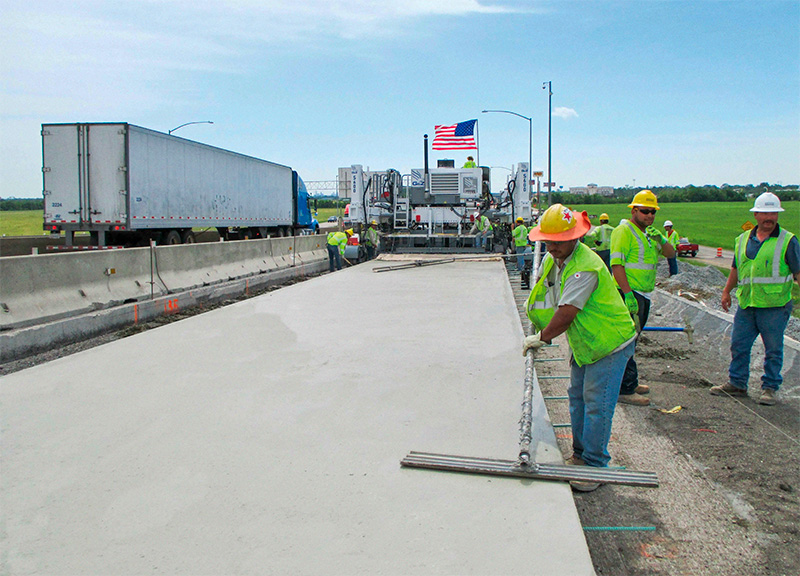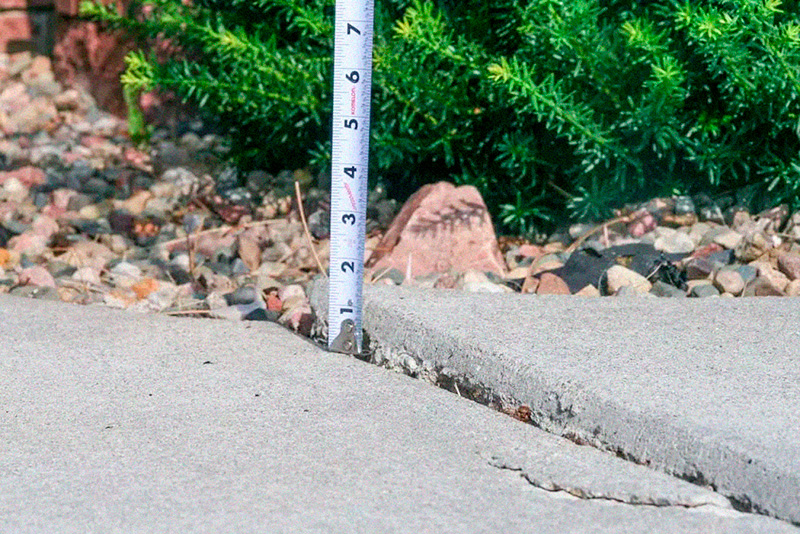Curb, Gutter and Pavement concrete with Carmix
Table of content:
- Curb, pavement and gutter explained
- Concrete for pavement and curb and gutter
- Grade of concrete used for curb and gutter works
- Why is a Carmix – best solution for paving
A curb and gutter refers to the concrete structure found along the edge of streets, sidewalks and driveways in cities and suburban areas. The “curb” is the raised edge of the pavement, usually about 6-8 inches high, that separates the road surface from the sidewalk, while the “gutter” is the depressed area next to the curb that is designed to channel rainwater and other forms of precipitation into drainage systems. The combination of a curb and gutter serves the important purpose of directing runoff away from buildings and other structures, preventing water damage and promoting safety by keeping pedestrians on the sidewalk and out of the street.

Paving on the other hand refers to the process of constructing a hard, flat surface by laying down and compacting materials such as asphalt, concrete, or brick pavers. The term is commonly used to describe the process of paving roads, driveways, sidewalks, patios, and other outdoor surfaces. The purpose of paving is to provide a durable, stable, and low-maintenance surface for vehicles, pedestrians, and other types of traffic to travel or walk on.
Paving is typically accomplished through a multi-step process that includes excavation and grading of the existing surface, laying down a layer of compacted gravel or other material for a solid base, laying down the paving material, compacting it, and then finishing it to the desired level and texture. The type of paving material used and the specific techniques used in paving will vary depending on the intended use of the surface and local climate conditions, among other factors.
Concrete is a popular material used in paving projects due to its durability, versatility, and long-lasting nature.

Concrete paving typically starts with preparing the subgrade, which involves removing existing pavement or any other obstacles, grading the surface to ensure proper drainage, and compacting the subgrade to provide a solid foundation for the concrete. Next, a layer of concrete is poured and spread evenly over the subgrade, and it is then smoothed and leveled using various tools and techniques. The concrete is then allowed to cure for several days to reach its full strength, during which time it should not be disturbed. After curing, the surface may be finished with a broom or other type of texturing tool to improve traction, or it may be stamped or stained to create a decorative pattern.
Concrete paving has many advantages, including its strength and durability, which allows it to withstand heavy loads and resist cracking and other forms of damage. Additionally, concrete is easy to maintain, as it does not require sealing or other special treatments to keep it looking good over time. It is also relatively inexpensive compared to other paving materials, making it a cost-effective option for many projects.
The grade of concrete used for curb and gutter works is typically determined by a combination of the intended use of the curb and gutter and local building codes and regulations.
Typically, a minimum strength of 2500 to 3000 psi (pounds per square inch) is required for curbs and gutters, although higher strength concrete may be used in some circumstances. This higher strength concrete is necessary to ensure that the curb and gutter can withstand the heavy loads placed on it by vehicles and to ensure that it will not crack or break under normal conditions.

In addition to strength, other factors that may influence the choice of concrete grade for curb and gutter work include the climate conditions in the area (such as freeze-thaw cycles), the intended use of the curb and gutter (such as in an industrial area or a residential neighborhood), and any special requirements for the project (such as special finishes or textures).
There is an important aspect associated with providing and pouring concrete for paving as well as curb and gutter works. Usually the paved surface is spread out over a long distance and as opposed to flooring or pouring piles, this process needs relatively small volumes of concrete to be delivered at exact time and poured little by little, so that concrete finishers have the time to spread it out and smoothen. This type of work can become a real challenge if you fully rely on concrete delivery by mixing trucks from your closest batching plant.
Batching plants are usually unreliable in terms of exact timing of concrete delivery as well as mixing trucks are not too good in the process of pouring concrete in small batches over a lengthy area of pouring.
This is where a self loading concrete mixer Carmix comes in.
It will mix the exact amount of concrete you need, even 1 cubic yard, and deliver it to the pouring area at the exact time needed.
Due to Carmix`s great offroad capabilities, 4 wheel steering and various transmission modes (crab walk etc.) it will be able to drive up to the exact area, where concrete is needed, no matter how tight this area is. Thanks to a number of discharge chute extensions, carmix can regulate the distance where concrete is going to be placed and spread out which makes it much easier for the concrete finishers to do their work.
All stated above makes Carmix a great tool for Curb, Gutter and Paving jobs. It will considerably lower the time of the project as well as allow you to cut your concrete production costs as you are not paying for batching plant profit margins and concrete delivery costs.
Talk to our specialist today to see how carmix can help you increase efficiency of your next project as well as raise it`s profitability.

